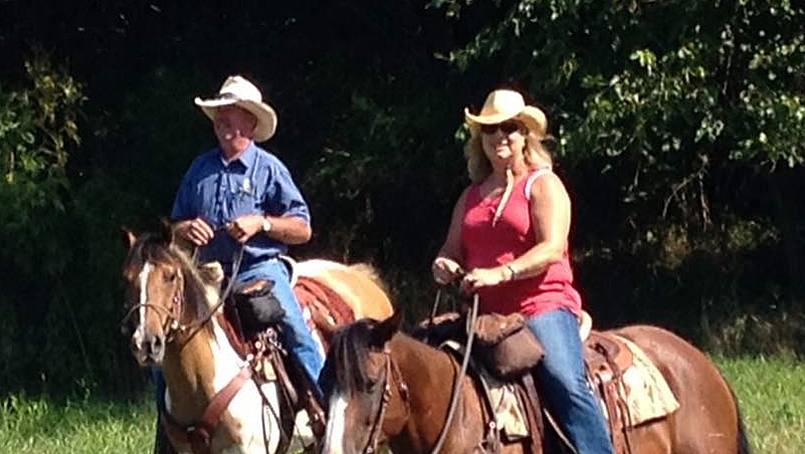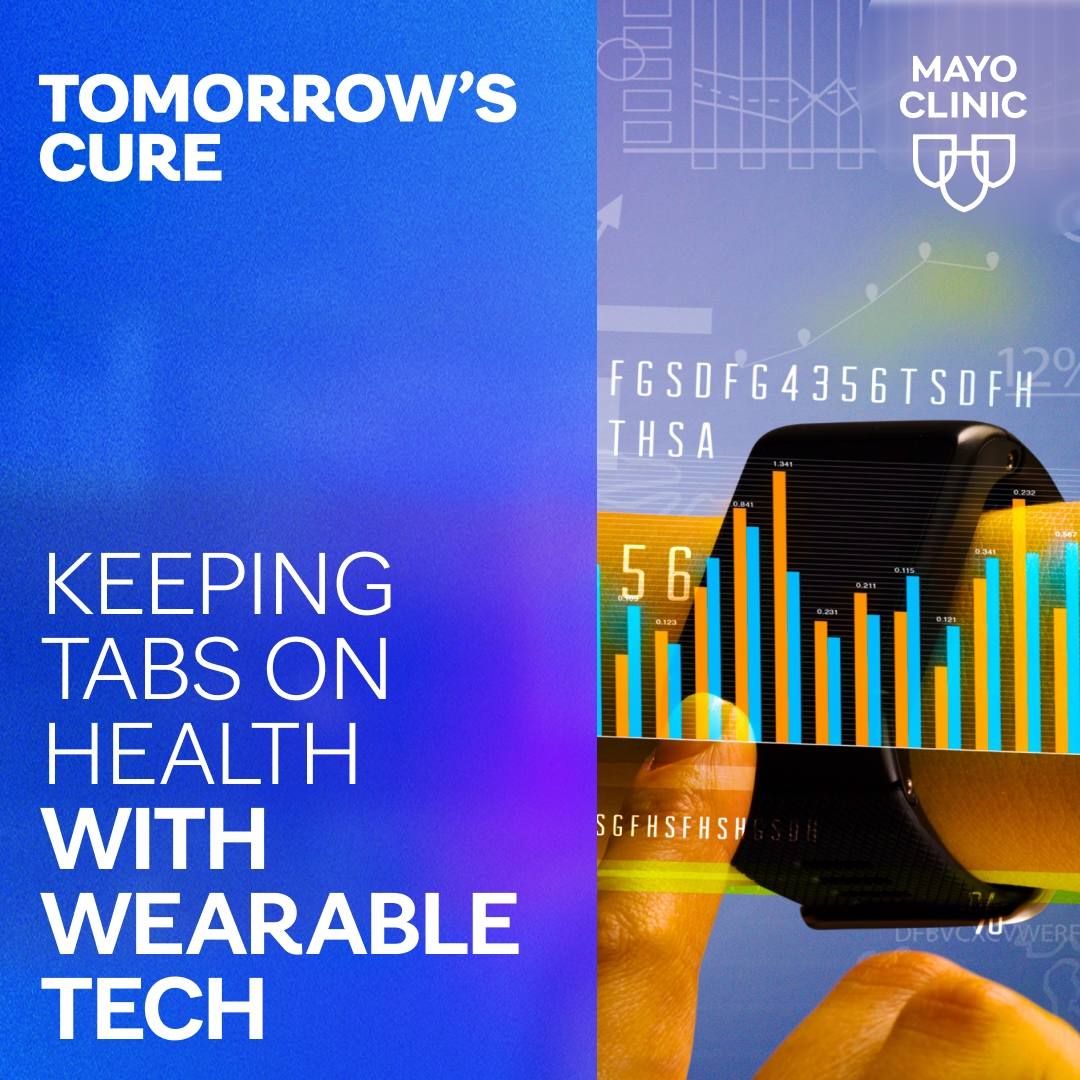-
Sharing Mayo Clinic: Pain rehabilitation puts the Berrys back in the saddle
 During the holidays last year, Nancy and Brent Berry of Danbury, Iowa, went on a train ride with their children and grandchildren, after a two-hour car ride to get there. They’ve been horseback riding with friends. They’re laughing, running errands together, and hosting their grandchildren for overnight stays.
During the holidays last year, Nancy and Brent Berry of Danbury, Iowa, went on a train ride with their children and grandchildren, after a two-hour car ride to get there. They’ve been horseback riding with friends. They’re laughing, running errands together, and hosting their grandchildren for overnight stays.
Not long ago, they couldn't enjoy any of those activities. Pain affected every aspect of their lives.
Brent quit his job several years ago due to medical disability. He has several chronic medical conditions, including inflammatory arthritis and chronic fatigue. He took prescription opioid and benzodiazepine medications for pain and sleep problems. He slept a lot.
Then Nancy got sick from the West Nile virus, caused by a mosquito bite. Her muscles swelled, her joints felt hot, and she had severe fatigue and pain.
"I was unable to do my normal activities," she says "I was in a downward spiral into chronic pain, and everything that goes with it — anxiety and depression. I felt like I was losing my life." The Berry's turned to the Pain Rehabilitation Center at Mayo Clinic as what seemed like a last resort. Through the program, they found a new way to approach their conditions, along with renewed hope for the future.
A beacon of hope
After Nancy was diagnosed with fibromyalgia, her family physician prescribed narcotic pain medication, muscle relaxers and a sedative for anxiety.
"My existence became about going to work, coming home and going to sleep," she says. "I cried at work and at home. Household chores didn’t get done. I didn't want to see friends, go outside or ride our horses. Our kids were worried about my depression and drug use. I didn't like what I was becoming."
Her husband was in a similar boat. "He'd get up around 9 a.m. and was back in bed by 11," Nancy says. "He'd eat something, take pain medication, and then sleep all afternoon. He fell asleep after supper."
Nancy learned about the Pain Rehabilitation Center at Mayo Clinic's Rochester campus — about four hours away from their home — and called to get in. "I thought I’d give it a try," she says. "What did I have to lose?"
The program, one of only a handful like it in the country, had three-month wait-list.
“They’re 100 percent committed to our mental, physical and spiritual health, and are the most wonderful group of people you’ll meet. They truly believe what they’re teaching.” – Nancy Berry
Mayo Clinic's Pain Rehabilitation Center has a 17-day outpatient program to help adults with chronic pain return to an active lifestyle. The program also has a two-day option for adults and a pediatric program for ages 12 to young adult. The Pain Rehabilitation Center at Mayo Clinic's Rochester campus treats about 400 patients per year. Mayo Clinic's Florida campus also has a Pain Rehabilitation Center, and Mayo Clinic's Arizona campus launched a Pain Rehabilitation Center in June 2016.
The most common diagnoses for those who participate in the program are back pain, headache, fibromyalgia and abdominal pain. Typically, patients have tried other ways to manage their pain, including medication, surgery and physical therapy, without improvement in their function or pain level. They've often restricted their lifestyle and lost strength to the point that even daily activities cause pain.
The program emphasizes discontinuing pain and sleep medication and focuses on self-managing chronic pain. Participants regain strength and stamina with the support of staff and peers in the program.
"Managing chronic pain requires an active, consistent approach to help people cope more effectively," says Susan King, a nurse at the Pain Rehabilitation Center. "Patients tell us they just want to get their lives back. Some of them haven't gotten out of bed for a long time."
A turning point for Nancy
Nancy stayed at a campground near Rochester and drove to the Pain Rehabilitation Center every day during her time in the program. She was one of about 30 participants — each at a different stage of the 17-day program. She participated in group therapy, physical and occupational therapy, and other group and individual sessions.
The center has specialists in pain medicine, physical therapy, psychology, psychiatry, pharmacology, occupational therapy, biofeedback, nursing and spiritual counseling to provide a range of support.
"Over the course of the program, we learned about chronic pain and the effect it has had on our lives, and how to cope with pain to live a more productive life," Nancy says. "We learned techniques for breathing, meditation, exercise, sleep and distraction, and how to retrain our brains."
About five or six days into the program, she says she started to see a change in herself.
"My new normal is happy rather than focused on my pain. I look forward to living my life again." – Brent Berry
"I started to figure out what I was learning. I became more positive and began to look at the brighter side of life," she says. "Each of us had a nurse coordinator to monitor us while we tapered off of medication. I went through mild withdrawal symptoms for a few days. It was unpleasant — like the worst hangover ever — but I got through it. We learned that Mayo Clinic research shows that opioids and benzos (benzodiazepine medications) don’t help with chronic pain."
About 50 percent of patients are on opioid pain medications when they enter the program, according to Wesley Gilliam, Ph.D., clinical director of the Adult Pain Rehabilitation Center program, and almost all patients are on some types of medications.
"Chronic pain is very difficult to treat, and the medical community is taking a hard look at how to do it differently — with less dependency on opioids for treatment," says Susan King.
Nancy says the program’s staff was truly concerned about participants' well-being. "They're 100 percent committed to our mental, physical and spiritual health and are the most wonderful group of people you’ll meet. They truly believe what they’re teaching, and it shows."
Brent’s turn to find a new normal
When Nancy thought about returning home with her new outlook and skills, she was anxious. "I was excited to live a more normal life and practice the skills I’d learned but knew it would be difficult for me to live with Brent, who was still in the chronic pain cycle, with depression and anxiety," she says.
Family members can visit program participants on certain days to learn about chronic pain management and their loved ones' journey. Nancy felt that Brent needed to go through the program, too, and discussed the need with her counselors.
 "Brent was skeptical at first but then saw how much better I was," she says. "He agreed to an evaluation while he was in Rochester, and the staff helped to get him in more quickly than he'd have been able to otherwise. I was overjoyed when he was accepted into the program."
"Brent was skeptical at first but then saw how much better I was," she says. "He agreed to an evaluation while he was in Rochester, and the staff helped to get him in more quickly than he'd have been able to otherwise. I was overjoyed when he was accepted into the program."
Brent says the program has made a huge difference in his life as well.
"Every aspect of life is better when you have a more positive outlook," he says. "My new normal is happy rather than focused on my pain. I look forward to living my life again. No matter how bad I feel in the morning, I get up and get dressed, and do as much as I can.”
Brent is up by 5:30 a.m. and now stays up all day. He and Nancy now go to a medically oriented gym and practice the exercises they learned at Mayo Clinic. Both continue the physical therapy programs recommended at Mayo Clinic.
"We support each other, discuss what we should be doing and remind each other that we can do this together," Nancy says. "We keep in touch with the people we went through the program with. They're part of our support system."
Nancy and Brent say their grown children have noticed the changes in them, too. "They invite us to more activities, so we're more involved now," Nancy says. "They can see that we're a lot happier. We're doing more with our friends and riding our horses again. We don't take any of this for granted."
'You can do it'
Participants can return to the program's one-day after-care component as often as needed. Both Nancy and Brent have been back for after-care.
"It reinforces what you’ve learned," says Brent. "Just walking into the building (Generose Building) makes me happy."
Nancy says she recommends the Pain Rehabilitation Center to anyone with chronic pain who wants to get their life back. Her advice: "Have an open mind, and try to learn as much as you can from the program. It will change your life for the better."
Brent agrees the program has been life-changing. "It’s unbelievable. You probably will not find a better program anywhere in the country," he says. "There were people who came into the program with walkers and wheelchairs and went home without them. If you truly want to change your life and are willing to put in the effort, you can do it."
HELPFUL LINKS
- Learn more about pain medicine.
- Explore the Pain Rehabilitation Center.
- Connect with others talking about pain management on Mayo Clinic Connect.
- Request an appointment.







